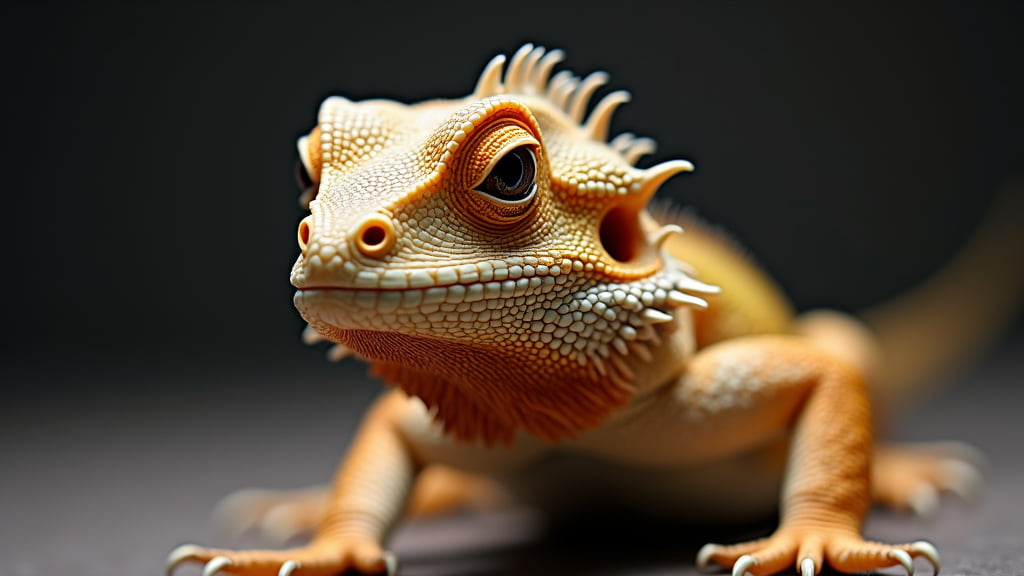Bearded dragons, affectionately known as “beardies,” are popular pets due to their docile nature and captivating personalities. However, their care requires keen observation and understanding, especially when it comes to identifying signs of stress. One major indicator of stress in bearded dragons is the appearance of stress marks. In this blog post, we’ll explore what stress marks are, what causes them, and how to manage and prevent them effectively.
What Are Bearded Dragon Stress Marks?
Stress marks in bearded dragons usually appear as dark horizontal lines or spots on their belly and occasionally on their limbs. These marks can vary in intensity and may sometimes cover a significant part of the dragon’s body. When I first noticed stress marks on my beardie, Puff, I was immediately concerned. Over time, and through consulting with experts and doing extensive research, I’ve learned that these marks are a common but important signal that your dragon is experiencing discomfort or stress.
Recognising Stress Marks
Stress marks can manifest differently depending on the individual dragon:
- Dark Lines or Spots: Look for dark horizontal lines on the underside of the body.
- Colour Changes: Some dragons might show a darker overall colour.
- Patchy Appearance: The marks may appear sporadically across the body and limbs.
Understanding what stress marks look like enables you to take timely action to alleviate your pet’s stress.
Common Causes of Stress Marks
Identifying the root cause of stress marks is the first step toward resolving the issue. Here are some of the most common triggers:
Environmental Stressors
Bearded dragons are highly sensitive to their surroundings. Environmental stressors include:
- Temperature Fluctuations: Dragons require a stable environment with a proper temperature gradient. Too hot or too cold can stress them out.
- Incorrect Humidity Levels: Beardies thrive in an environment with low to moderate humidity. High humidity can cause stress marks.
- Inadequate Lighting: UVB lighting is crucial for their health. Insufficient or inappropriate lighting can lead to stress.
Social Stressors
Interacting with other animals or even constant human handling can invoke stress in bearded dragons:
- Presence of Other Pets: Cats, dogs, and other pets can intimidate your dragon, leading to stress.
- Overhandling: Constant handling without breaks can make your beardie uneasy.
- Limited Interaction: Conversely, a lack of positive interaction can also be a stressor.
Health-Related Stressors
Unidentified health issues can manifest as stress marks:
- Parasites: Internal or external parasites can cause significant stress.
- Injury or Illness: Any physical discomfort from injuries or underlying illnesses often leads to stress marks.
- Improper Diet: Nutritional deficiencies can result in stress, often visible through these marks.
How to Manage Bearded Dragon Stress Marks
Once you’ve identified the cause of the stress, it’s crucial to take appropriate steps to alleviate it. Here’s a guide based on my experiences:
Optimise the Environment
Creating a stress-free habitat is crucial:
- Thermal Gradient: Ensure you have a well-maintained temperature gradient: a basking spot around 32°C to 35°C and a cooler side ranging from 24°C to 27°C.
- Humidity Control: Invest in a good hygrometer to keep an eye on humidity levels, ideally between 30% and 40%.
- Proper Lighting: Make sure your beardie has access to UVB lighting for 10-12 hours a day.
Minimise Social Stress
Balance interaction and solitude:
- Balanced Handling: Spend time with your beardie but ensure they have plenty of time to themselves.
- Controlled Environment: Keep other pets away from your dragon’s enclosure to minimise intimidation.
Health and Wellbeing
Regular health checks can prevent undue stress:
- Veterinary Consultations: Regular check-ups can help catch and treat potential health issues early.
- Balanced Diet: Ensure your dragon receives a diet rich in insects, leafy greens, and occasional fruits.
Conclusion
Recognising and understanding stress marks in bearded dragons is an essential part of responsible pet ownership. By staying vigilant and proactive, you can create a comfortable and healthy environment for your bearded dragon. Remember, each dragon is unique, so it might take some time and observation to understand what specifically triggers stress in your pet. In any case of persistent stress or health issues, consulting a reptile vet is always advisable.
For more detailed guides on bearded dragon care, feel free to explore our other posts here. If you’re new to owning a bearded dragon, you might find our beginner’s guide to bearded dragon care particularly useful.
By following these guidelines, you can ensure your bearded dragon leads a stress-free and fulfilling life. Happy dragon keeping!

